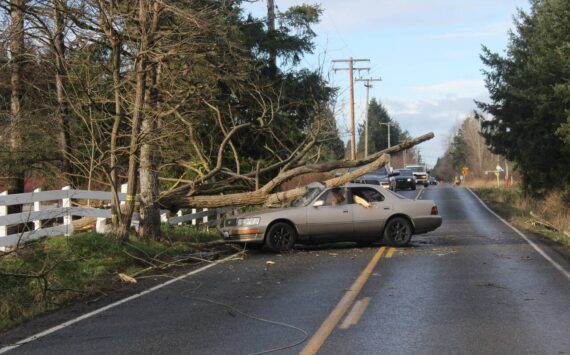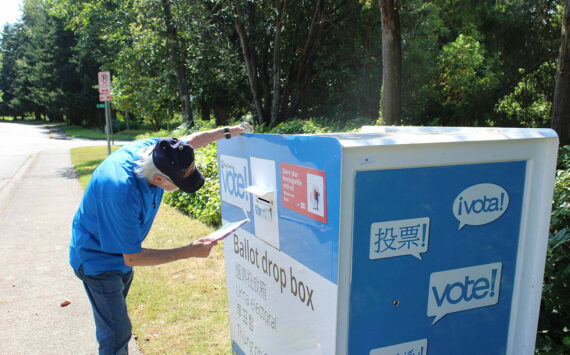On Thursday, the second of two bridge caissons (tower foundations) is scheduled to set down on the Narrows seabed as part of the ongoing $849 million project to build a parallel Tacoma Narrows Bridge. As with the Dec.15 touchdown of the Gig Harbor (west) caisson, the technology-intensive process of guiding and placing the 39,000-ton Tacoma caisson onto the seabed will be virtually identical.
While the process of building caissons for suspension bridges is much the same around the world, engineers working for design-builder Tacoma Narrows Constructors (TNC) have faced special challenges. Caissons are not built in this kind of environment very often, said Tom Sherman, TNC caisson construction manager. In most places, crews are building caissons in lakes or rivers where water currents flow in one direction and there are only small, if any, tide fluctuations. In the Narrows we have tides that change water levels up to 18 feet and have strong currents that flow in both directions.
This is highly specialized work, Sherman continued. You need to be equipped and crewed with the right kinds of folks to get this kind of work done, not to mention the extensive and detailed planning and preparation required.
The Tacoma caisson touchdown will be a day-long event starting around 8:30 a.m. Riding the tides and currents to facilitate touchdown, TNCs crews will begin gently steering and sinking the massive structure towards the seabed using seawater, air and computer-monitored anchor cables as controls. When the process begins, the structure will already be within seven feet of the 149-foot-deep water, and is expected to touch bottom around 4:45 p.m.
Throughout the day, crews will control the caissons buoyancy by alternately pumping water into the dredge wells of the caisson and by releasing air from underneath the caisson, eventually filling its 15 hollow cells with 17,500 tons of seawater. Thats the equivalent of four million gallons of water or filling 200,000 20-gallon gas tanks.
At any point in the process, if crews determine that the caisson is not at the ideal location for touchdown, they can pump air into the system to increase the caissons buoyancy, lift it off the seabed, and reposition it again. However, Sherman expects this touchdown to be as successful as the first.
Upon touchdown, crews will add more weight to the structure to prevent high tides from lifting it off the seabed. This will be done with water ballast on the day of touchdown, followed by more concrete pours to continue building the caissons walls on the following day.
For more information on the new bridge, visit www.tacomanarrowsbridge.com.




